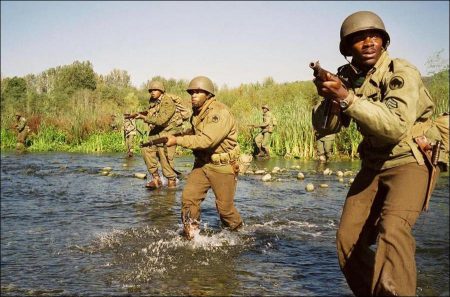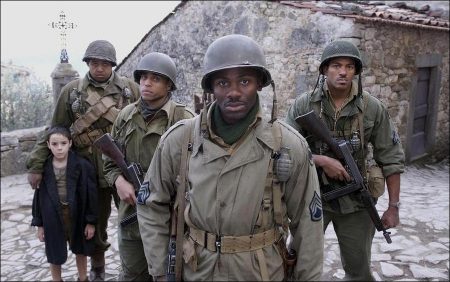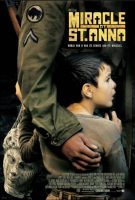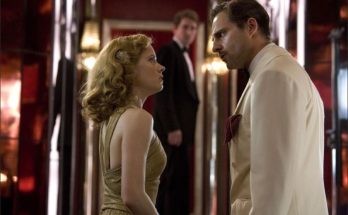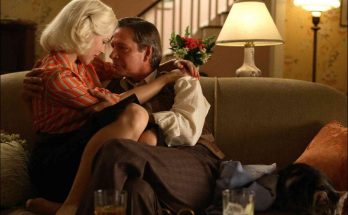Tagline: World War II had its heroes and its miracles.
“Miracle at St. Anna” is a gripping World War II epic that chronicles the story of four African-American soldiers who are members of the U.S. Army as part of the all-black 92nd Division Buffalo Soldiers stationed in Tuscany, Italy, during World War II. They experience the tragedy and triumph of the war as they find themselves trapped behind enemy lines and separated from their unit after one of them risks his life to save an Italian boy.
Directed by Spike Lee from a screenplay written by James McBride, the author of the acclaimed novel of the same name, the film is produced by Lee, Roberto Cicutto and Luigi Musini. Executive producers are Marco Valerio Pugini and Jon Kilik.
The director of photography is Matthew Libatique and the production designer is Tonino Zera. Barry Alexander Brown is editor and Carlo Poggioli serves as costume designer. Internationally renowned jazz trumpeter, bandleader and composer Terence Blanchard created the score. “Miracle at St. Anna” is presented by Touchstone Pictures in association with On My Own Produzioni Cinematografiche and Rai Cinema.
“It’s a World War II film—a brutal mystery that deals with historic events and the stark reality of war,” says Lee. “But it’s also a lyrical, mystical story of compassion and love.” Derek Luke stars as Staff Sergeant Aubrey Stamps, Michael Ealy is Sergeant Bishop Cummings, Laz Alanso plays Corporal Hector Negron, and Omar Benson Miller portrays Sam Train, the ‘chocolate giant’ with a big heart who befriends an Italian boy played by newcomer Matteo Sciabordi. Also among the cast are John Turturro, John Leguizamo.
Soldiering For Story
Author James McBride Turns Childhood Stories—and Years of Research—into a Novel and Script
The story behind “Miracle at St. Anna” is rooted in a Brooklyn, NY, brownstone some four decades ago, thanks to the uncle of a young boy who would grow up to be acclaimed writer James McBride. Uncle Henry shared first-hand accounts of WWII, Italian battles and the relationships formed overseas, but young James didn’t yet recognize the value of the stories.
“My uncle used to talk about how great the Italians were,” says McBride. “He used to tell war stories which—at the time—us kids ignored.”
It would be years and long after the death of Henry when McBride would recall some of the details his uncle revealed. “He used to talk about how the Italians loved the soldiers there, the black soldiers. So I investigated it and discovered that there was an entire division of blacks in Italy as combat infantry. That’s how I found out about the 92nd Division.”
The 92nd Infantry Division consisted of 15,000 African-American men—dubbed Buffalo Soldiers—who served in Italy during World War II from August 1944 to November 1945. They weren’t the first African Americans to fight for the U.S., in fact, the term Buffalo Soldier dates back to the Mexican War. “Buffalo Soldier was a nickname that the Native Americans gave to the black members of the 9th and 10th Cavalries because of their dark skin and hair that was akin to their beloved buffalo,” says McBride.
The 92nd became the foundation of McBride’s novel “Miracle at St. Anna,” which was published in 2003. It earned an instant fan in Spike Lee. “I called James and told him I would like to make this into a film,” says the director. “I became a student of World War II, in particular a student of the 92nd Infantry Division, the Buffalo Soldiers.
“James introduced me to several of the surviving Buffalo Soldiers whom he met and interviewed for the novel,” Lee continues. “They saw things that you would not want anybody to see—the horrors of war: moments that they still think about, still dream about, still wake up in a sweat about.”
Lee decided that McBride was the best person to write the screenplay for the film. “James is the sole author of the script,” says Lee. “I think he did a great job, but he had great material to work with: the novel he wrote.”
McBride says it took years to pull the story together. “A story like this doesn’t tell itself,” he says. “‘Miracle at St. Anna’ was never written as a war story, it was written as a story about human beings who are reacting in times of extraordinary stress, trying to retain their humanity.”
Producer Luigi Musini adds, “It’s about friendship and about getting to know each other behind fears and prejudices. It’s about helping each other. It’s about the extraordinary encounter of different people, blacks and whites, old people and children, Italians and Americans and Germans, all in the midst of a war.”
The author did more than become familiar with the world, he immersed himself in it. “I studied Italian at The New School in New York City. I moved to Italy with my family for six months. I interviewed dozens of Italians—Partisans and Fascists. I interviewed dozens of African-American soldiers who fought in the war, most who have since passed away. I must have read at least 20 books. I went to the Army War College in Carlisle, Pennsylvania. I studied the whole business of what the 92nd did in Italy during the war, to try to get an idea of what really transpired.”
With a solid understanding of the history, McBride was able to create the story, weaving in real-life elements he’d learned: actual Buffalo Soldiers may have influenced a character trait along the way and their stories helped shape battle scenes and allowed McBride to depict how these soldiers were often treated. While the story is fictional, says McBride, there is truth at its core.
“The film opens with what seems like the murder of an innocent man at the post office,” says McBride.
The rest of the story helps explain why it happens, who the players are and what event—which turns out to be a true atrocity in Italian history—leads to this present-day murder at a New York City post office.
“A reporter decides to investigate and discovers a priceless Italian artifact in the suspect’s apartment,” says McBride. “The artifact leads to a long-forgotten division that fought in World War II.”
The story goes across the ocean and back in time as a group of soldiers from the 92nd Division attempt to cross the Serchio River in Tuscany, Italy, in September of 1944. In many ways, says Lee, this is where the real story begins.
“Four men get caught behind enemy lines and they befriend a traumatized young Italian boy,” says Lee. “They find themselves in a remote Tuscan village—with people who’ve never seen a black person before. It’s about how they all overcome these barriers—cultural, language—and try to form an allegiance for the oncoming Nazi attack.”
Producer Roberto Cicutto adds, “It is about relationships between people who would have never met in ordinary life and who understand and help each other against the horror of the war.”
Says McBride, “I think these kinds of stories can be told in a way that doesn’t really point a finger at any particular person or society but just show how difficult life was, not only for the Buffalo Soldiers who were fighting in Italy, but for the Italians, as well as many of the Germans.
“You could say it’s a war movie,” continues McBride. “You could say it’s a movie about a boy and a man. You could say it’s a movie about Americans and Italians. You could say it’s a movie about a German who does the right thing. But the film is ultimately about the miracle of love between human beings and the choices they make in the face of enormous adversity.”
McBride says it was tough at first to transform the novel into a movie. “As a novelist, you tend to think internally,” he says. “You can guide what the character says and you can explore what he or she is thinking. Movies don’t have time to explain. You have to get right to the muscle.”
The author adds that he didn’t mind handing over control of what had been his baby for so long. “It was nice to see somebody else put their vision to it. I happen to like Spike’s vision. I trust it. It’s like jazz…everyone adds their own particular flavor and color and that’s what creates the song.”
Michael Ealy as Sergeant Bishop Cummings, Laz Alonso as Corporal Hector Negron, Derek Luke as 2nd Staff Sergeant Aubrey Stamps and Omar Benson Miller as Private First Class Sam Train in Miracle at St. Anna.
Recruiting Multicultural Cast Members
With American soldiers in Italy battling Germans, director Spike Lee had to assemble a large, culturally diverse cast for the film. “This is an ensemble piece,” he says. “There are the four core Buffalo Soldiers, of course, but the whole cast consists of great American actors, great Italian actors, great German actors—everyone’s speaking their native tongue, too, which I really think makes this feel authentic.”
According to Lee, even the four core soldiers represented cultural diversity. “James was very smart in his varied representation of black men at that time; if you have different aspects—class, social backgrounds — consequently, you will have conflict, too.”
The Core Four
Lee was confident in the actors tapped to play the four Buffalo Soldiers. “I think there’s a great rapport that they developed on and off the screen,” he says. “Even though there is a lot of conflict between them, when the bullets start flying, you see them bond.”
Derek Luke was cast in the role of Staff Sergeant Aubrey Stamps. “He’s the leader,” says Lee of the character. Adds James McBride, “Stamps is a well-educated college graduate who has both faith and disappointment in the American system. He’s deeply divided as to what his place and the place of the Negro in American society is or should be.”
Luke, whose feature-film debut was in 2002’s critically acclaimed drama “Antwone Fisher,” says he could relate to his character. He adds that the film affected him more than he ever expected. “We started shooting in Italy and that was a great experience, but I was just looking for pasta, you know? “I found more,” he continues. “I found history. I found the connection between African Americans and Italians.”
Luke recalls a day when they were shooting in the Italian village. He was sitting on a step eating his lunch when an elderly woman approached and started yelling at him in Italian. “I was like, ‘Oh no, here we go,’” says Luke. “An Italian PA walks over to me like he has bad news. ‘She wants to know why you’re not eating bread with your soup?’ he tells me. And I wanted to cry, because I felt like that was my grandmother.”
Michael Ealy won the role of Sergeant Bishop Cummings. “Bishop is everything Stamps is not,” says McBride. “He’s a hustlin’ con artist, a slick talker, a ladies man. He doesn’t care about the white man; he’s not that enamored with the black man. The only thing he cares about is himself.”
Lee adds, “Bishop is a happy-go-lucky guy. He does not like to be under the thumb of authority. He likes card games and women.”
Still, Ealy found substance behind the character’s indifference. “I think Bishop is the voice that doesn’t believe change is going to come, and doesn’t believe that he belongs over there fighting,” says Ealy. “I think his street smarts, his common sense, if you will, just won’t let him buy into the war. He’s a good soldier. But that’s because he wants to stay alive, not because he believes in the mission.”
Playing the role of Hector Negron, the radio operator, is Laz Alonso, who’s no stranger to military roles, having appeared alongside Jamie Foxx, Jake Gyllenhaal and Peter Sarsgaard in 2005’s “Jarhead.” His agent told him to read McBride’s book. “I fell in love,” the actor says.
According to McBride, Alonso’s character is a reluctant soldier. “Hector Negron is a Puerto Rican from Harlem who really wants nothing to do with any of it,” says McBride. “He’s a dark-skinned Puerto Rican, lives in Harlem and he’s part of the black culture, so he finds himself assigned with the black soldiers in the war.”
The character, charged with translating for the Americans and Italians, also speaks fluent Spanish. “Spike wanted to make sure that I really spoke Spanish,” Alonso says. “He didn’t want one or two words, you know, he wanted a fully fluent cat. So I put myself on tape doing Hector’s scenes in Spanish. And it worked.”
Completing the core four is Omar Benson Miller who was a fan long before he’d heard about the film. “I read that Spike Lee was doing a giant war film, a black war film, the first of its kind. And then when I read the title, I recalled the book, because I read the book as soon as it came out. I remember saying, ‘Wow, this is going to be a crazy movie whenever they make it.’”
Miller campaigned hard for the film and won the director over, but he had one big obstacle to overcome. “My physical prep was a little different than everybody else’s, because Spike wanted me for the movie, but he told me I had to lose weight to do it,” says Miller. “I had nine weeks to lose 60 pounds. We got it done.”
Miller portrays Sam Train, a gentle giant. Says McBride, “Sam Train is a simpleton, a big man physically, but an innocent. He’s illiterate, though he’s not dumb. He’s deeply religious and he believes in superstitions that country folk back in that time used to believe in.”
Lee adds, “Train—the biggest one of the group—is a man-child. He’s the one who befriends the young Italian boy.”
Plagued by the boy’s traumatic past and language barriers, the characters must find a way to communicate. Miller did just that, says Lee. “We have a scene where his character, Train, is trying to communicate with the kid,” says the director. “He speaks English, the kid speaks Italian, but they have to find some way to communicate and Train comes up with this system of tapping. That was improv. It wasn’t scripted. I think it’s one of the few kind, gentle scenes you can have in a World War II film.”
The Boy
Matteo Sciabordi was cast to play Angelo, the traumatized young Italian child befriended by Sam Train. Director Lee says casting the part wasn’t easy. “The crucial role for this film was the kid,” says Lee. “That was a wild card. We had to get the right kid. If you look at the great films of Italian neorealism—‘The Bicycle Thief,’ ‘Rome, Open City,’ ‘Germany Year Zero,’ ‘Miracle in Milan’—all those films are in some aspect about the effect of the war on children. And it was amazing that James incorporated that into his novel having never seen any of those films at the time.
“So we put out a call—radio, TV, flyers, magazines—letting people know we needed this kid, and 5,000 people came through,” Lee continues. “I saw the last 100. And Matteo—when I saw him, I knew this was the kid. We were blessed. It was a miracle finding this kid—the one out of 5,000.”
Sciabordi says he had fun working on his first film. “It felt like playing a game,” he says. “The only thing I didn’t like was having to get up in the morning—sometimes like 5:30 a.m.”
The 9-year-old Nordica, Italy, native shot most of his scenes with Miller, who played Train, or as Sciabordi’s character called him, the chocolate giant. “Omar was great fun,” says Sciabordi. “We were always playing and he even taught me how to play baseball.”
That’s Italian
When it came time to cast the Italian roles, Lee found new challenges. “I spent weeks casting in Rome, and we had to be very particular, because the same way people in New York don’t sound like people from Mississippi, people from Tuscany have a very distinct dialect versus people in the south. The actors who were from Rome had to be coached so they’d sound like they were from Tuscany.”
Showcasing the political strife in Italy during the war is a provocative character known as The Great Butterfly. According to McBride, Peppi Grotta represents the great Partisan leaders who led thousands in Italy throughout the war. “He’s a deeply thoughtful young man,” says McBride. “After witnessing several atrocities, he basically snaps and becomes one of the most ruthless and most clever and most soughtafter Partisans. Although he’s ruthless against his enemies, he’s always a fair-minded person, deeply kind, fighting for his country—not fighting to kill Germans, fighting to kill the enemy. He’s a leader with a heart.”
Pierfrancesco Favino was tapped for the role. “He is probably one of the best Italian actors of his generation,” says producer Musini. “He’s very versatile and talented. He’s working a lot abroad right now: he appears in this year’s ‘The Chronicles of Narnia: Prince Caspian’ and next year’s ‘Angels & Demons.’”
The character Renata was one of the key roles in the film and an instant ally for the Buffalo Soldiers. Says McBride, “Renata exemplifies the difficulties Italian women faced during the war. Her husband was drafted and she hasn’t heard from him in two years. She’s very smart and is one of the few people in her village who has learned some English. She tries very hard to make her father renounce his Fascist beliefs.”
Italian actress Valentina Cervi was cast in the role. “She is a young actress who has an international reputation,” says producer Cicutto. “She’s worked in Italian films, French films, with Jane Campion in ‘The Portrait of a Lady,’ and she has a fresh potential that clearly comes out in ‘Miracle at St. Anna.’”
Rounding Out the Cast
Rounding out the cast are John Turturro as Detective Ricci, charged with investigating the post office murder; Joseph Gordon-Levitt, the reporter assigned to cover the murder and subsequent discovery of the Italian artifact; John Leguizamo in a cameo role as Enrico; Kerry Washington as Zana Wilder, the lawyer hired to represent the suspected post office murderer; D.B. Sweeney as Colonel Driscoll, an advocate for the Buffalo Soldiers; Robert John Burke as General Almond, a high-ranking official who doesn’t support the 92nd Division; Omari Hardwick as Platoon Commander Huggs; Omero Antonutti as Ludovico, Renata’s Fascist father; Sergio Albelli as Rodolfo, an Italian of questionable loyalties; and Lydia Biondi as Natalina, the village healer.
Boot Camp
Basic Training, Forming Camaraderie
Director Spike Lee enlisted his soldiers-to-be in an intense two-week boot camp led by renowned military advisor Billy Budd (“Band of Brothers”). The experience enhanced the authenticity of the battle scenes—but that’s not all it did.
“The brotherhood became real in boot camp,” says Omar Benson Miller. According to Budd, that was the whole idea. “The goal of the basic training was to create a cohesive unit of men that could confidently act like soldiers, handle and fire all weapons correctly and react as a soldier would during battle,” says Budd. “It was essential to also create a strong sense of teamwork amongst the men.”
The military advisor says the ‘Miracle’ crew did remarkably well. “The men responded very well to the boot camp. Of course, you get the odd one or two that are so out of their comfort zone and struggle with what we call ‘Day 5 Blues.’ But overall, they gelled very quickly and helped one another, showing team spirit early on. The cast impressed me. I even gave them their cell phones back by the end of week one.”
Still, the job wasn’t easy. Budd cites the terrain as a challenge—the region’s rivers and mountains made it tough for the crew. But he says the hardest part was the historical significance of some of the scenes, particularly the massacre at St. Anna. “We shot it on the very soil where hundreds of civilians died. I can safely say that those two days were the toughest in my career.”
Miller had a similar experience. “It was physically challenging and really put you in a mindset of what it was that these guys, the actual Buffalo Soldiers, had to endure. They were treated like they were ‘less than,’ and the physical conditions that these guys had to go through—like crossing the Serchio River in 30-degree temps—that stuff is no joke. But we had phony bombs going off, and they had real bombs going off. So these guys deserve a lot of respect. Whatever physical prep I had to do is nothing in comparison to what actually went on.”
Shooting A Miracle on Location
Director of Photography Matthew Libatique, Production Designer Tonino Zera Transport Viewers to 1944 Italy
Shooting the film in Italy was essential, providing unmatched authenticity to the film. Says producer and native Italian Musini, “The film is shot in a region of our country along the summits of the Apennines—right at the linea gotica (Gothic Line), which was the major line of defense in the final stages of World War II. The location is highly representative of what the war was in Italy, what our resistance was. True dramatic episodes took place there.” Lee agrees that the location was powerful, but not without its challenges.
“We’d never done a World War II film before,” the director explains. “The first ten days were shot in the Serchio River, covering the battle that opens the film. There was a lot of historical significance. I think everybody made note and felt that we were shooting on a location where actual battles took place.
“The massive battle sequences were rough,” Lee continues. “There were explosions, squibs and choreography; we fought the terrain and the weather, and we didn’t have a lot of time.”
Still, Lee came to the set with a vision. He knew what he wanted the end result to feel like, but recognized it would be tough to achieve. “One of the hardest things to do in this film was to get the tone right because this is a World War II film that’s very brutal, very stark, gruesome—yet there’s a very lyrical, magical, mystical element to it. More than several miracles happen in the film, so we needed to find the right tone between the stark reality of war and the magical moments.”
Lee relied heavily on director of photography Matthew Libatique and production designer Tonino Zera to help him achieve his vision. Lee and Libatique had teamed up before, working on “She Hate Me” and “Inside Man,” so the director of photography understood and appreciated Lee’s process. “Spike is a library of film history,” Libatique says. “His use of film reference was instrumental in getting my mind in a place where I could understand his vision for the film. He is also a lead-by-example person and demands a performance from not only his actors but his key personnel.”
Libatique says his approach to “Miracle at St. Anna” was not unlike his approach to every film he photographs. “My goal was to create a photographic atmosphere and—if lucky—a language that transports the viewer into the time and place of the story.”
Zera helped achieve that goal. “Ever since we started scouting locations, it was fundamental for me to have the same artistic vision as Spike and Matty,” he says. “‘Miracle at St. Anna’ is full of feelings and emotions. I tried to give that soul to each location.” Zera was asked to fill sparse outdoor locations with greenery, rebuild building exteriors and construct the interior of a barn.
Libatique cites the film’s climax as his biggest challenge. “It was an intricate undertaking,” he says. “We were working in this beautiful, but space-challenged village with gunfire, squibs, wet-downs and weather. We had a great deal to accomplish with limited daylight.”
The solution, according to the DOP, was preparation—a lot of it. “We began with storyboarding all the beats of the scene and then followed that by deconstructing the boards with Spike, Billy Budd and Mike Ellis (1st AD),” says Libatique. “To maximize time, we designed coverage schemes that would allow us to get at least two needed angles in a single set-up. We used a third camera for additional coverage.”
The film’s lighting offered a special surprise, though Lee admits he’d been tipped off prior to arriving in Italy. “Martin Scorsese told me that the light in Tuscany is like nowhere else in the world,” says Lee. “He was right. Most of our film was shot in natural light.”
Libatique adds that shooting with so much natural light led to welcome challenges when it came to shooting indoors. “From a lighting perspective I would say my favorite scenes involved anything inside Ludovico’s house,” he says.
“With a great deal of exteriors in the film it was a challenge to integrate artificial lighting into a film in which we’re surrounded by the theme of natural light.”
But the director of photography says it’s another scene that stole his heart. “From a personal place, the massacre at St. Anna was a powerful experience due to the weight of the location’s past,” says Libatique. “I felt like a tourist stealing a picture of a personal moment in someone’s life.”
Lee agrees. “We shot in the exact same place where 560 Italian civilians were massacred on August 12, 1944,” he says. “We all felt the spirits of those people.”
Preparing For Battle
Costume Designer Carlo Poggioli Outfits Soldiers on All Sides
Costume designer Carlo Poggioli knew he had his work cut out for him. “This was a big movie with lots of different looks,” he says. “Spike Lee pushed very hard to reach the absolute truth by insisting we do very thorough research.”
So Poggioli treated the film with great respect from the very beginning. “My approach was to visit the museum for the victims of St. Anna where I met one of the few survivors from the massacre. I was inspired,” he says. “And I started my research for the American costuming needs by meeting with an actual Buffalo Soldier from the 92nd Division.”
Poggioli was tasked with providing both contemporary and historical wardrobe. He outfitted struggling Italian villagers, victims of the massacre and soldiers from America, Italy and Germany.
Even before filming commenced, the costume designer’s efforts made an impact, says Lee. “In pre-production, we showed many films to the actors who played the Buffalo Soldiers and Nazis—though they were kept separate at first. So for Leni Riefenstahl’s film ‘Triumph of the Will,’ we’re sitting there: myself, the Buffalo Soldier actors and many of the crew. All of a sudden, we hear these boots come marching in. The Germans playing the Nazis came marching into the theater. They’re in uniform, too. I’m sorry, I know it’s a movie, but when you see uniformed German Nazi soldiers—the helmet and the swastika are real.”
Sounds of War
Composer Terence Blanchard Develops a Moving Score
When it came time to score the film, there was no question in Lee’s mind who would handle the job: Terence Blanchard. The pair had collaborated on 11 feature films prior to “Miracle at St. Anna,” including “Mo’ Better Blues,” “Malcolm X” and “Inside Man,” along with HBO’s critically lauded Emmy-winning documentary “When the Levees Broke: A Requiem in Four Acts.”
“This is a big, big, big score,” says Lee. “In fact, Terence had never had to write the amount of music that he had to write for this film.”
Blanchard was instantly on board. “I’m inspired by the story itself,” he says. “Growing up in New Orleans, I remember the Buffalo Soldiers marching in parades and never realized the significant role they played in fighting for our freedom. It’s an honor to be a part of a project that helps to relive and tell a small segment of what those soldiers dealt with in our history.”
Blanchard says Lee’s guidance for the score was specific. “Most of the direction from Spike was to show the heroism of these soldiers and not make the action the primary source of inspiration.”
The composer adds that Lee isn’t afraid to get involved in the process. “The process that Spike and I use is challenging, because Spike will take melodies and assign them to characters. Then I take the melodies and structure them.”
Blanchard, a storyteller in his own right, found ways to distinguish the opposing sides of the war. “I wanted to draw a distinction between American soldiers and German soldiers. That was first done through the use of percussion, using a higher-pitched, tighter sound for Germans, and a fuller-field drum sound for Americans,” he explains. “I also drew a distinction by using French horns for American forces, and a Wagner tuben for German forces.”
Lee says he couldn’t wait to record the score. “Terence’s scores have always been such a great contribution to my films, lifting the movies up,” he says. “We have more instruments on this film than ever before—a 90-piece orchestra.”
Additionally, says Blanchard, he summoned instruments from the era. “There were many areas where we used period instruments such as a mandolin, accordion and slide guitar. One early scene was recorded with a rope drum, which is an old instrument prominent in that period.”
Miracle at St. Anna (2008)
Directed by: Spike Lee
Starring: Derek Luke, Michael Ealy, Laz Alonso, Omar Benson Miller, John Leguizamo, Joseph Gordon Levitt, Kerry Washington, Robert John Burke, Omari Hardwick, D.B. Sweeney
Screenplay by: James McBride
Production Design by: Tonino Zera
Cinematography by: Matthew Libatique
Film Editing by: Barry Alexander Brown
Costume Design by: Carlo Poggioli
Set Decoration by: Cristina Onori
Art Direction by: Carlo Serafin, Donato Tieppo
Music by: Terence Blanchard
MPAA Rating: R for strong war violence, language and some sexual content / nudity.
Studio: Touchstone Pictures
Release Date: September 26, 2008
Visits: 41
